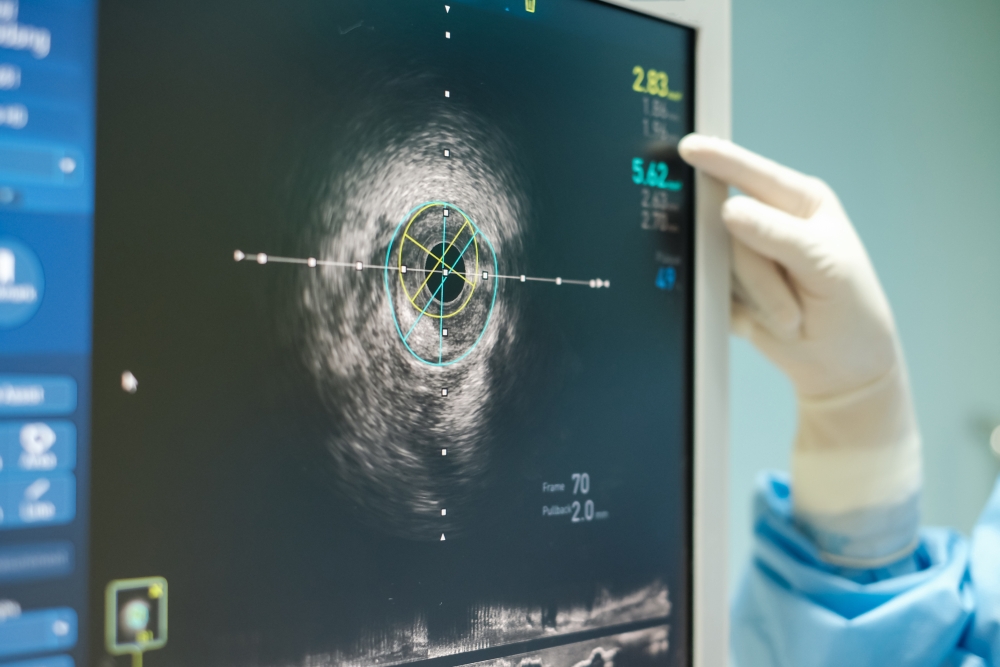Intravascular Ultrasound
(IVUS)
Overview
Intravascular ultrasound (IVUS) uses sound waves to create images of your artery in real time. It evaluates your arteries to see if they're normal, and if there's plaque, it defines the extent and type of plaque that may cause blockages. It's useful in diagnosing and planning treatment, such as stent placement and its optimization, or for the results of prior treatment, such as prior stent placement.

What you can expect
During coronary angiography, a tiny tube (catheter)—about 1 millimeter in width—with an ultrasound probe at the end is threaded over a guidewire in the artery to the area to be tested. The ultrasound catheter sends sound waves and receives echoes from the sound waves as they bounce back from the body’s tissues. These echoes are translated by a computer into images of the artery. An IVUS slightly increases the risks of diagnostic cardiac catheterization.